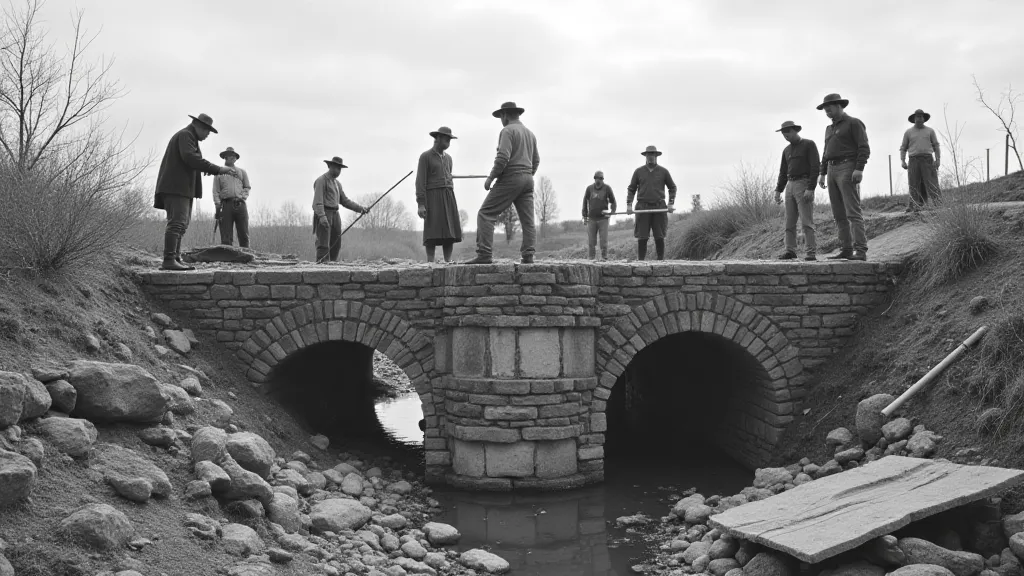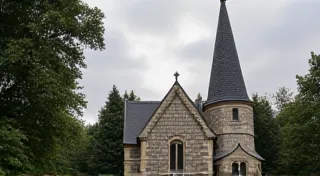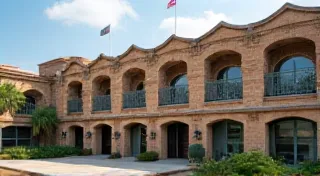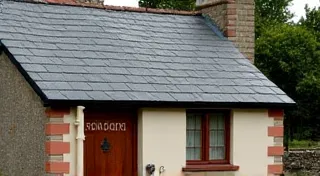The Historic Bridge: A Connection for Generations
Our region boasts numerous landmarks, but few resonate with the history and enduring significance of the Historic Bridge. More than just a structure of stone and steel, this bridge has served as a vital artery for trade, community connection, and the very growth of the surrounding areas. Let's delve into the details of its construction, architecture, and the pivotal role it played in our local history.
Early Days: Necessity and Design
Before the Historic Bridge existed, crossing [Name of River/Body of Water] was a considerable challenge. Travelers relied on precarious ferries and fording, significantly hindering commerce and communication between [Town/City A] and [Town/City B]. Recognizing this need, the [Original Builder/Company] began planning a permanent solution in [Year of Planning/Initial Proposal]. The design, championed by architect [Architect's Name], reflects the prevalent [Architectural Style, e.g., Victorian, Romanesque] style of the era. It was a bold undertaking for the time, requiring significant engineering innovation and a considerable workforce – largely comprised of local laborers.

Architectural Marvels
The Historic Bridge’s design showcases remarkable architectural details. Its [Type of Bridge, e.g., suspension, truss, arch] structure is constructed primarily of [Materials, e.g., granite, sandstone, steel]. Note the intricate [Specific Architectural Feature 1, e.g., keystone carvings, decorative ironwork], a testament to the craftsmanship of the era. The bridge's piers, rising majestically from the [River/Body of Water], are a particularly impressive feature, demonstrating a mastery of engineering and design. The use of [Specific Architectural Feature 2, e.g., rusticated stone, corbelled details] adds a layer of aesthetic appeal, distinguishing it from purely utilitarian structures.
A Lifeline for Trade and Community
Upon its completion in [Year of Completion], the Historic Bridge immediately became a vital lifeline. Prior to its existence, the journey between [Town/City A] and [Town/City B] could take [Time] and was often fraught with danger. The bridge dramatically reduced travel time and opened up new avenues for trade. Farmers could easily transport their produce to market, manufacturers could receive raw materials, and residents could connect with family and friends on the other side of the [River/Body of Water]. The increased accessibility fostered economic growth and strengthened community bonds. The bridge facilitated the transport of not only goods but also people, contributing significantly to the region’s population growth and development.

Preservation and Legacy
Over the years, the Historic Bridge has faced challenges, including [Mention specific challenges, e.g., natural disasters, deterioration]. However, ongoing preservation efforts, including [Mention preservation efforts, e.g., repairs, restoration projects], have ensured its survival. Today, the bridge stands as a proud symbol of our region’s history, a testament to the ingenuity and perseverance of our ancestors. Its continued presence provides a tangible link to the past, reminding us of the importance of connection, progress, and the enduring power of community.

The Historic Bridge is more than just a landmark; it’s a living legacy, a connection for generations, and a cornerstone of our region’s identity.





